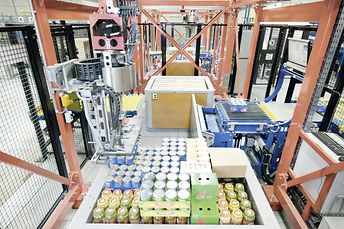ROBOTS – New Addition to the Warehouse Workforce
Not since the endearing R2D2 made it to the big screen in George Lucas’ Star Wars in the 1970s have robots generated so much interests amongst so many. Some are wondering how they can be put to better use to make life more pleasant while others fear they are becoming so useful that they may someday put us out of our jobs.
Why you may ask, haven’t robots been with us for a long time? While it is true that industrial robots made their debut in US auto plants in the 1960s, the robots of yesteryear are a pale shadow of the modern day autonomous machines. With increase in computing power and improvement in vision technology, today’s robots can navigate the world far better than their predecessors, making them valuable helpmates in homes, hospitals, restaurants, manufacturing plants and distribution centres.
What are the qualities of robots that have made so valuable to man? How are they being harnessed to help our industry work faster and smarter?
What are the qualities of robots?
The robots’ biggest asset to man is its productivity. They can:
Deliver high quality work almost error free
Perform the same job without getting bored
Achieve high volumes
Work 365 days with some downtime for maintenance
They can also be made to lift heavy loads without injuring themselves and work under hazardous conditions, in places with poor lighting and toxic chemicals for instance.
How can they put to use to improve productivity and efficiency?
Order picking
Order picking is an integral part of any warehouse operation. Items are pulled from inventory to fill a customer order. It is a highly labour intensive operation requiring close to half the warehouse workforce in a manual operation. With the increase in manpower costs and the increasing difficulty in employing workers for the job which can be strenuous and monotonous, it is one area of the warehouse operation which can do with automation.

Order picking robot Yet it is one of the most challenging tasks in the warehouse to automate, as it is difficult to replicate the human eye and human hand.
With technology breakthroughs, the industry has overcome this challenge. Today we have available order picking robots that can achieve over 2,000 picks an hour. They can be integrated into existing warehouse infrastructure and put to work immediately without prior ‘training’, i.e., it is not necessary to program the individual articles beforehand or record their properties.
With their capacity to work 24/7 with some time off for scheduled daily maintenance, they are ideal for the high octane world of e-commerce with high demands for quick turnaround.
Heavy lifting
Stacking and unstacking are not only tedious but potentially damaging for the health. Carry a carton of canned drinks once a day is easy, but carrying it repeatedly throughout the day can cause backaches and repetitive-stress injuries.
In the food and drinks industry, manual handling and lifting is estimated to cause some 30% of all acute injuries. Most countries have some guidance on manual lifting at work, palletising but some have gone a step further to safeguard workers’ health and safety by specifying the maximum load that workers can be expected to lift, lower, pull, push or carry a day.
For companies operating in countries with stringent standards, mechanisation is a necessity, and increasingly robots are seen to be a viable alternative. They can lift heavy loads of over 40 kgs day in, day out, without feeling the weight, even in challenging environment like loading docks which can be very hot or very cold.
With advancement in gripping systems, robots can be put to work to undertake a multitude of tasks such as retrieving boxes and placing them on conveyors or sorters, palletising and depalletising, and of course stacking and unstacking.
Helpmate
Modern-day robots have an ace over their predecessors – mobility. With vision technology, they can ‘see’ the shape of something even in low light. With touch technology, they can sense irregularities or problems with items, prompting them to ‘adjust’ their behaviour, automatically working their way around obstacles. Freed to move around, unhindered by electrical hook-ups and guiding tracks, these autonomous machines can be valuable helpmates.
In hospitals, they are mobilised to deliver drugs, clean linens and meals while carting away soiled sheets and trash. In our warehouses, they can be used to move products from shelves to order fulfillment zones, cutting down on unnecessary walking. It an oversized distribution centre in a largely manual operation, an order picker can walk as much as 10 kms a day. Imagine what that would mean for packers’ efficiency if robots can bring the products to the pick stations for picking?
With their increasing versatility and their capacity to work, robots are one option companies can explore to rev up their operation. But like most things, it is not suitable for everyone. Before you decide check in with your material handling supplier who can help you weigh up your options and provide you with some estimates on costs.